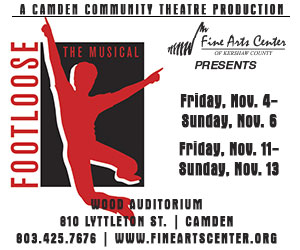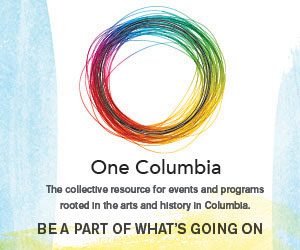Lee Ann Kornegay: The Beat Goes On
By Kristine Hartvigsen
Try to focus your lens on Lee Ann Kornegay, and you better be able to capture a moving target. One moment the Columbia producer and award-winning documentarian is reading research and sipping wine on her front porch; the next she is hundreds of miles away wailing on a djembe at a mountain-top drum circle or even riding bareback on a sandy beach in Cote d’Ivoire.
Those who know Kornegay for her documentary work that has raised the bar on cultural education and community involvement might be stunned to know that her earliest motivation was an ’80s-era cable television network promoting pop music. The University of South Carolina media arts graduate initially balked when offered a position at Chernoff/Silver (now Chernoff/Newman), one of the most powerful ad agencies in the Southeast. “I thought: Advertising? Really? No!” Kornegay recalls. “I wanted to make music videos. It was the MTV era. I wanted to put moving pictures with music.”
Kornegay had met agency patriarch Marvin Chernoff when she rented a small apartment over Chernoff’s garage while attending USC. She felt fortunate to be connected with someone in the arts but had not considered approaching Chernoff for a job after graduation. He took the lead and made her an offer.
“It was 1984, and they were just beginning to pick up some video and broadcast work,” she says. “That was what I was studying in school.” Kornegay ultimately accepted the job. “The fun thing about Chernoff/Silver was that we became known as the ‘loose creatives.’ Our team was the wild child of the advertising world. We got to do more stuff that was fun and ‘out there.’ Our clients had big budgets. At the time, we didn’t realize that. We had a lot of freedom because there was more money.”
In the late ’90s, Kornegay found herself drawn to a new discipline after seeing West African drummers perform at USC. In the years that followed, she became much more than a simple fan of the art form, taking up the instruments and traveling to Africa to study the culture. It was life-changing and put her on the path to where she is today.
“When I saw drumming at USC, I was blown away,” Kornegay recalls. “I wanted to be involved.”
Indeed. Faisal Salahuddin, a guest drummer at the initial USC event, went on to form Djoliba Don, a West African drumming group in Columbia. Nevermind that she had no experience. A newly inspired Kornegay was determined to enter the troupe’s ranks. “I bought a drum,” she says. “I kept showing up at auditions and trying to nudge my way into that scene. Faisal became my teacher. And for three of my trips to Africa, he was there.”
The two partnered to operate Djoliba Don for several years before dissolving after Salahuddin enrolled in law school. “We decided that seven years was a good run,” Kornegay notes.
In 2000, after 16 years with Chernoff/Silver, Kornegay decided to break out on her own with L.A. Kornegay, Media Productions. It must have been difficult to leave the security of the agency where she managed all electronic media productions for the firm’s offices in Columbia, Hilton Head, Orlando, and Houston. “She did some really special work for us,” Chernoff says. “She is a very caring and wonderful person. I am proud she was part of our organization and proud that she is a friend.”
Around this time, Kornegay and Salahuddin traveled together to West Africa twice to study drumming and dance. Those trips eventually influenced Kornegay to return on business to bring some of the region’s stories to stateside audiences.
“The first two times, I went on my own dime to study the culture in West Africa,” she explains. “The last two times, it was actually for work. The places I went were destitute, poor, and sad. We weren’t chasing after zebras.”
Kornegay grew up in a home that often bustled with visitors from all over the world. “Our home was always open to people from different cultures,” she says. Those sensibilities likely moved Kornegay into the social and political activism that’s most effectively communicated through the medium of the documentary. Two projects, in particular, emerged from her travels to West Africa. Boloba is a documentary that showcases individuals from Guinea, considered among the world’s finest percussionists. Depicting the region’s music, song, and dance, the film captures the joy and exhilaration associated with the country’s strong drumming traditions. Boloba was named Best Documentary in the Colossal Film Crawl in 2003 and also was selected for the Indie Grits Film Festival in 2006. “When she put that documentary together, with the power of her camera, she just made magic,” Salahuddin says.
Another documentary, Ivory Coast in Crisis, depicts that country’s struggles to reduce poverty and achieve democracy. Kornegay kept hand-written journals of her experiences, some of which she has shared on her blog at lakornadventures.blogspot.com. “I spent my 43rd birthday on a plane to Cote D’Ivoire, West Africa,” she writes. “… I was asked to document the volatile situation and to hopefully bring back some positive images of this area recently struck by civil war.”
There had been an attempted coup about six months before she arrived. Most of the conversations around her were in French, and she sometimes found it challenging to know what was going on. But emotions transcend spoken language, and Kornegay found herself moved as she met with a local women’s group: “I openly wept while at this meeting as they described the hardships and agony of war − how they were trying to cope. Their courage was amazing. … These folks were testifying to us about the horrors of war and seemed to look to us to tell their stories and to get them help. It was brutal and wrenching, people breaking down in sobs and then gathering themselves to finish their story. …
“The courage of the people, it seems, is the story − their perseverance and determination not to fight. The folks we talked to were trying desperately to find a peaceful solution to the conflicts wreaking havoc on their country, to try and carry on.”
During most of the time she spent in Africa, Kornegay and Salahuddin were accompanied by armed security people. While in Conakry, Guinea, at a time when political tensions were high, Kornegay recalls an unescorted run-in with what appeared to be the unfriendly local powers that be.
Other documentaries she has produced over the years include 701 Whaley, a history of the 1903 mill community building and its restoration. Kornegay also has produced several pieces for South Carolina Educational Television’s “Southern Lens” series, including a West African cultural arts piece shot in Guinea and I’m Building a Bridge, the South Carolina civil rights story of the Briggs vs. Elliott school desegregation case. She has held multiple arts residencies, including teaching West African drum and culture to children at Harmony School in Columbia, all while single-handedly raising her daughter Kellane, 20, who now attends the College of Charleston.
While Kornegay works hard, she plays just as hard. One eventful, wine-enhanced ladies night out in Columbia’s Vista led to playful shenanigans and the development of one of Columbia’s most anticipated and provocative evenings of the year – the (mostly) annual What’s Love Valentine’s Day show. The collective brainchild of Kornegay and artist Heidi Darr-Hope, What’s Love is an adults-only exploration of sensuality expressed through art.
“We had gone out to Gervais & Vine and were sitting in the back room. It was a bunch of girls − and maybe a guy or two. Someone had a camera, and we started taking pictures. We were flashing each other and being really silly,” Kornegay says. “A week or so later, we looked at the photographs and thought they were kind of cool and sexy and fun. We thought we should show them as part of something about sex and love and all that. We thought, ‘Let’s do a Valentine’s Day show!’ So that is how it started.”
The first What’s Love show was held in 2005 at Vista Studios Gallery 80808, where Darr-Hope has a studio. That first year, Kornegay and Darr-Hope did everything themselves, from the catering to soliciting artists to participate. Any costs came out of their own pockets. “The event was free, but we did sell some art,” Kornegay says. After a couple of years, they started selling tickets and still packed the place. In fact, What’s Love quickly outgrew Gallery 80808 and was moved to the grand hall at 701 Whaley Street. That decision opened up greater opportunities for Kornegay to bring in performance artists in addition to visual artists.
Kornegay recently completed work on a 30-minute documentary about decorated World War II veteran, T. Moffatt Burriss, that is slated to air on SC ETV in November 2011. She’s also finishing up films for Girls Inc. of Greater Columbia and the Historic Columbia Foundation. One topic she’s like to focus her energy on is a project to help connect Columbia’s Hispanic community with the larger local community, a challenge during a time of high anti-immigrant sentiment in South Carolina. “The whole thing kind of turns my stomach,” she says. Her hope, as always, is that raising awareness can lead to meaningful change.
So why does this multi-talented woman with so many diverse interests remain in South Carolina?
It’s home, plain and simple.
“I never wanted to be famous or win an Academy Award or go to Los Angeles to do films,” she says. “That has never been a dream or goal. For me, it’s about what can I do here in my own community that is going to make some sort of difference.”






.jpg)
